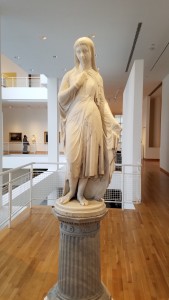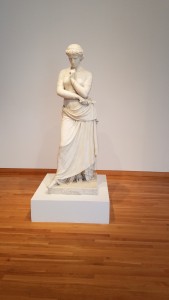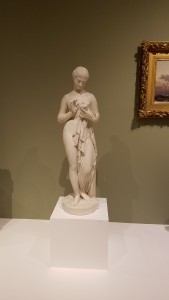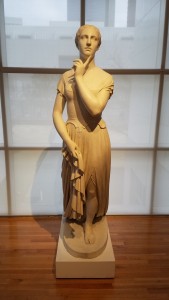It’s worth putting the schedule for the week of the premiere up:
Sunday, November 2:
I don’t play a lot of trombone gigs, but the Euclid Symphony Orchestra came calling, and I answered. I’m glad to get to play with one of our closest neighbors, and actually their home is closer to my home than Lakeland is. Repertoire is fun, including a flute transcription of feline-favorite composer Khachaturian’s Violin Concerto.
Monday, November 3:
Our dress rehearsal, including soloists on the Kieffer and Vivaldi. They always say rough dress, good concert. Not open to the public, but thoughts, prayers, and good vibes appreciated.
Wednesday, November 5:
At 12:30, in Room C-1078 at Lakeland Community College, I’ll present a talk entitled “How Do You Write a Symphony?” for students, colleagues, and any interested members of the public. I’ll walk you through my process of creating this symphony, sharing drafts and sketches, with, if all goes well, a few previews. The talk is going to be filmed for later release on YouTube.
Thursday, November 6:
For the 2024-2025 season, I began giving pre-concert talks the week before Lakeland Civic Orchestra concerts, as part of the Willoughby-Eastlake Public Libraries event series. It was a lot of fun, and I decided to keep doing it. I’ll discuss all the music on the program, and all in attendance get a free ticket to the concert. The talk for this concert is Thursday, November 6 at 6:30pm at the Willoughby Hills Public Library, 35400 Chardon Rd, Willoughby Hills, OH 44094. Free registration is recommended but not required, more information here.
Sunday, November 9:
The big day, only 30 days from the posting of this blog entry! I still can’t quite believe that it’s here, and I’m starting to be very excited (and I think the members of the Lakeland Civic Orchestra share this sentiment). It is truly a blessing to be a part of even what has already happened, and the finish is yet to come. We will have a run-through rehearsal in the early afternoon, and the concert is at 4:00pm in the Wayne Rodehorst Performing Arts Center on the campus of Lakeland Community College. Tickets are available in advance online or at the box office on the day of the concert: $10 for adults, $8 for veterans, seniors, and Lakeland alumni, and $2 for students. We are also offering a season pass for all three of our ticketed concerts at Lakeland for $22. In addition to the symphony, we will perform Olivia Kieffer‘s The Talking Beasts and Vivaldi’s “Winter” from The Four Seasons.
I’ve been speaking with friends and family, and at least a few are planning to attend the concert, some from out of town. Olivia Kieffer will be attending to hear her work, and I suppose mine, and one of my oldest friends, Matt Specter, is coming up from Cincinnati. My parents have expressed interest in driving up from Columbus, but they don’t travel as well as they used to, so we’ll have to see. We’ll be recording the dress rehearsal and performance, so hopefully there will be a good version among those that I can swap out for the MIDI transcription.
After that, the inevitable letdown, I suppose, although there are a few symphony-related tasks, such as getting videos posted, sharing with those I’ve promised to share with, and correcting the fair number of errata in the score and parts (along with a couple of changes that I made during rehearsals). It has been an incredible journey over the last six years and especially the last nine months to get this work in shape, and as we head into the premiere, I am hopeful, grateful, and just trying to enjoy the ride.



